Legend of Zelda: Breath of the Wild – Review
Platform – Wii U, Switch
Developer – Nintendo EPD (Assistance by Monolith Soft)
Publisher – Nintendo
MSRP – $59.99 USD
Editor’s Note – This game was reviewed on the Wii u with review copy being provided by Gaming Instincts.
Introduction
It has been a long road leading up to release of Legend of Zelda: Breath of the Wild. With the game’s delay to this year and development also being done on the Nintendo Switch, fans of the series and onlookers alike have been waiting with baited breath. Putting these astronomical expectations aside, Breath of the Wild is a title that is a bold step forward in both presentation and mechanical execution. The latest entry still holds onto staple aspects of the first game and the world of Hyrule, but brings it back in a refreshing way with its melding of fantastic and science fiction elements. It’s immensely satisfying marriage of gameplay and world-building make this feel like an organic experience. It is not without flaw, as an inconsistent framerate issue plagues this game and does so seemingly at the worst of times. Nonetheless, Legend of Zelda: Breath of the Wild still stands as a near masterpiece that truly feels like a grand adventure as well as a tale of redemption in the post-apocalyptic world of Hyrule.
Story
The story of Legend of Zelda: Breath of the Wild is very fascinating, as it is a far cry from the other recent entries in the franchise. It harkens back to the first two entries’ themes The game simply begins with the amnesiac hero Link being awakening after a very long slumber. A disembodied voice beckons him to leave his sanctuary and venture into the world, for he is the last hope for it. It is a fairly ambiguous beginning makes for an interesting narrative structure because both Link and the player are on equal ground and discover what has happened in the world at the same pace.
The story begins 100 years after a catastrophe has befallen the world of Hyrule. An evil called Calamity Ganon had attacked the kingdom and was able to thwart a multilateral defense effort. This age-old evil was able to hack and take control over small and large machines called Guardians and Divine Beasts respectively, allowing Ganon to take Hyrule Castle from the inside. This, in turn, led to the appointed knight Link being mortally wounded, leaving princess Zelda to contain this force by herself. Zelda also transports Link to a shrine where laid to recover for an entire century. It is an attention-grabbing twist to start the adventure with the hero having already failed to thwart the villain’s evil plans and having to pick up the pieces after the fact.
With Ganon’s influence over the land and his controlled Guardian robots patrolling the land, monsters populate the world in greater numbers than the citizens themselves. Towns and encampments are the only places that have some semblance of safety and travelers are at the mercy of Ganon’s Moblin and Bokoblin minions. Because of this context, BotW rides the line between a fantastic and post-apocalyptic theme and the story flourishes because of it. This tale is less about going the distance with a mortal adversary and feels more like a quest for identity and redemption. It puts a refreshing twist on the stereotypical premise of the hero that is destined to succeed no matter what – a premise that has been beaten to death in past years.
With that, the story unfolds the more you explore the land and trigger Link’s memories. These moments are provoked by visiting a location in which Link had been and by helping the various races regain control over their respective Divine Beasts. Also, further light is shed on the story and back story through talking with the many NPCs who populate the various towns and even in the wilderness. You actually get to learn firsthand how Calamity Ganon’s occupation has affected the various peoples of Hyrule through conversation and through exploration.
Each major race had a champion that, one hundred years ago, who piloted one of the Divine Beasts which are large mechs in the shape of an animal. In order to gather enough power to face Ganon again, Link has to infiltrate these giant machines and forcibly and free them from Ganon’s control. Doing this curries favor with the various races and helps to make their lands a little safer aside from the dangerous monsters that roam the land.
One of the more interesting aspects of the story is princess Zelda herself and the role she plays in it. She is integral to the plot than she ever has been in a Zelda title. The princess is the only reason the Calamity Ganon is being kept at bay in Hyrule Castle and is not free to infect the rest of the world with his influence. She is also the one who rescued Link from certain death and allowed him to recuperate for 100 years. With that, the princess is more or less waiting for Link’s assistance in taking out Ganon.
The champions and other key characters encountered throughout the story are serviceable but feel a bit like they fall into certain stereotypical archetypes. There is some character development with a couple of character who are close to Link, but the others fall into this trap with little to no complexity. Despite this issue, there are still some powerful and poignant moments to experience as Breath of the Wild’s story unfolds. While some of the story can feel a bit subdued, this game is more about the journey itself than it is about simply the end goal. The gameplay and free approach to exploration is a testament to this fact.
Gameplay
With the survivalist and free nature of Breath of the Wild’s approach, it is hard to know where to even begin when it comes to gameplay because there is quite a lot going on. This latest outing int the franchise focuses on a free exploration of the world in order to access micro and macro dungeons, acquire weapons and armor and forage for food and potion ingredients along with stamina and health upgrades. It also focuses on both melee and ranged combat with the many monsters of the land and survival in the wilderness. With the exception of the Great Plateau region, which serves as a tutorial of sorts, the player is free to do this in any way and order he or she sees fit.
This quite possibly the most nonlinear title in the series since the first two entries and it evokes the same feelings one would get from those games along those felt in Shadow of the Colossus. Particular regions are blocked off from access from the outset, but not in an artificial way. Some regions are difficult to access because of inhospitable climates and formidable monsters that are better equipped. This is pleasantly refreshing approach and a welcome deviation from other Zelda titles that feature quests requiring MacGuffins in order to gain said access.
In order to gain more heart containers and stamina gauge increases, Link will have to find and complete challenges presented in various Sheikah shrines which are littered throughout Hyrule. Some are easy to access, while others are either in hostile environments or are secretly buried underground. These micro dungeons offer physics-focused puzzles and sometimes offer trials by combat. Regardless, completing these dungeons will award spirit orbs that can be redeemed at Hylian shrines in exchange for the aforementioned heart container and stamina increases.
To better see where these shrines are located, among other areas of interest, you will have to get to higher ground and this is where the lookout towers come in. All throughout Hyrule there are quite a few watch towers – as many as there are sub-regions. Taking a cue from Ubisoft’s Assassin Creed series, Link can activate these towers which reveal that part of the world map. However, each tower will test you in a certain way, mostly in the ways of being able to climb for prolonged periods of time. Once activated, these towers along with the shrines and divine beasts act as fast travel locations which are very convenient way to get around. Towers also provide a great avenue for Link to use his paraglider to travel to areas in the vicinity with ease.
Climbing and being able to scale vertical surfaces is a very important gameplay feature in Breath of the Wild and it is pulled off expertly. Unless crafted with the Sheikah’s ancient technology, all vertical surface including natural formations and man-made structures can be scaled. This is provided you have enough stamina in order to make the climb. It is so exhilarating to scale seemingly insurmountable obstacles like the canyon cliffs and various mountains of Hyrule and being able to look out on the practically endless expanse. There is something poetic about just traversing the land can make you realize just how small you are in the grand scheme of things. The very same feeling even translates to paragliding through the air and across the landscape. Once you get the hang of it, you can easily paraglide from a high altitude towards a steep incline and break into a hard climb. If you have a shield equipped, you can even do some totally radical shield surfing down mountains and hilltops. It is really satisfying to do all of this on top of running about the land, but Link will eventually be accosted by monsters along the way.
The combat in Breath of the Wild is also a high point and is an aspect that follows a nonlinear approach. Melee combat offers quite a few options for attacking, defending and parrying. Link can take regular swings with his equipped weapon in up to three-hit combos. He can also do a high-powered attack holding the attack button down, but keep in mind that this will drain stamina. Lastly, Link can do a dashing and jumping attack that deals some pretty heavy damage but leaves him open for attack.
However, you can quick dodge enemies’ melee attack and even parry strikes with some good timing, which will leave enemies open. Successfully back dodging an enemy strike engages a small slow motion sequence where you can repeatedly mash the attack button, making Link quickly pull off multiple strikes in quick succession. This almost knocks the opponent down and out for a few seconds.
This all can be used in tandem with ranged combat which is equally rewarding and satisfying. Firing arrows from Link’s equipped bow is done in the first- and third-person with crosshairs being painted on the screen. Head shots will either knock enemies out or at least daze them and this becomes beneficial when fighting multiple monsters and needing to even out the playing field. Aiming can be done one of the several ways depending on the platform. On the Wii U, aiming can be done using the gyroscopic sensor of the tablet controller or you can opt to use the right stick to aim your shots. The former method is very accurate and makes for ranged combat that is really engaging. This also applies to using the Sheikah Slate’s camera and binocular features. On the Switch, Aiming can be done using these methods as well but also features an even more tactile way of aiming through detaching the joy cons. The left joy con is the bow arm and the right one serves as arrow and drawback arm. It is kind of amazing how well this method works and it feels like pure witchcraft at times.
The other ranged attacks at Link’s disposal consist of being able to hurl bound bombs (a Sheikah Slate feature) and his equipped melee weapon. Though you can do this with any melee arm, it is most beneficial when wielding weapons like spears polearms. Another great addition to this combat options is the ability to use these two core disciplines while on horseback. Link can take swings and fire arrows while on his mount and can even catapult himself from it to fire shots in slow motion.
However, you can choose to avoid enemy encounters all together and approach situations more stealthily. Breath of the Wild features a stealth gauge that visually telegraphs how much noise you make at any given moment. It is easily possible to get the jump on an enemy before they are even aware which gives way to potential critical hits.
All of these mechanics are tight in execution and give this adventure a large breadth of possibilities, but this only scrapes the surface of how you can master combat when you add the element of physics to the mix. Part of the creative magic imbued in Breath of the Wild is its implementation of physics and how is permeates every facet of the game, combat included. Along with the bound bombs, Link acquires quite a few skills for his Sheikah Slate (a primitive tablet computer) that allows him to manipulate certain objects and even freeze time for them. Being able to freeze things in time and striking them enough can cause them to propel in the direction of the swings, following the laws of momentum and inertia after time starts again. The “Magnesis” ability let Link control and manipulate metal objects with the utmost precision. It is up to you to utilize these tools in order to solve the many physics oriented puzzles in dungeons and parts of the overworld. Though these uses of said tools in conjunction the natural elements like fire and electricity are used for puzzles, they also have combat applications too. You will surely cackle with glee when using a lit arrow to ignite some tall grass, burning the Moblins patrolling through it as a result. Being able to roll boulders downhill to take out unaware Lizalfos is also pretty satisfying.
These skills work perfectly just because of how well wrought the physics mechanics in this title are in practice. All objects and characters have real mass, friction, and buoyancy. Fire, water, ice, and electricity are ever present forces of which you can bend to your will at times. However, they are indiscriminate and will pose a threat to Link. The random weather system complements these elements and adds to the wonderfully spontaneous moments in Breath of the Wild. Rainy weather will make climbing nigh impossible and electrical storms can be fatal depending on Link’s altitude, lack of trees and whether or not Link has metal items equipped. This all occurs within a day/night cycle, as is standard in most of the modern Zelda games. In terms of gameplay, it feels like the folks at Nintendo have thought of everything and pulled it off when it comes to crafting a living, breathing world just through the gameplay alone. It is all impressive stuff thus far.
Going back to the subject of the hero’s vitality, you will be surprised to know that item shops and slain monsters do not yield heart containers. Health recovery can only occur through the consumption of food and potions. During your travels, you will be able to forage through the local vegetation for region-specific comestibles. Wild animals also populated the wilderness and can hunt them for their meat. All of these ingredients are usually edible on their own, but it is logically more beneficial to cook them to create a wide range of unique foods. Using a pot to dump and cook these food items in, you can create dishes that do much more than just healing Link. Some foods can increase his stamina or give offer him resistances to inhospitable climate or even specific types of damage. This seemingly banal feature is more than just a useful mechanic that gives the player an edge over some obstacles. Much like how food is a product of a culture in the real world, the act of foraging and cooking further grounds Hyrule as a very believable place. Aside from cooking these ingredients, you can even sell your spoils to the many wandering traders and shop owners in various towns.
Surprisingly enough, this Hyrule has a bustling economy which offers some depth where you would not even expect it. Each salesman has his or her heavily sought after items and are willing to pay a hefty price for things they have a high demand for. If you have a keen eye for this aspect, Link can be a well-prepared hero and live the life of a plutocrat if you play your cards right in this area. It is all brilliant to say the very least.
These valuable rupees can also be spent on horses to help Link cover more ground quickly. If you are a rupee pincher it is possible to catch a horse in the wild and break it like some Hylian cowboy. A wild-caught horse can be registered and even named at the regional stable. These stables serve as rest stops where you find traders, adventurers, and workers who sometimes sell items and offer side quest opportunities.
You can also spend your hard-earned rupees on armor pieces at a certain shop in towns. Some armor types just increase Link’s base armor class, as where others can provide buffs to climbing and swimming speed or help Link to survive the elements. Speaking of the elements, you can also buy different types of arrows that offer elemental and/or explosive. Shields can The only things that cannot be purchased in any capacity are the weapons. These have to be found while exploring the land and by picking them off of dead enemies.
You may be wondering the subject of the weapon portfolio has been yet to be explained. The reason for this is that this is one of the only two sources of contention when it comes to Breath of the Wild. There is quite a wide range of weapon types and each type comes in many makes, models, and grades. Like the first Fable, there are unique and legendary weapons that are unique in appearance and power. From blades to bludgeons to polearms to axes, Link can lay his hands on all sorts of armaments. Ranged weapons are pretty much relegated to bows and do not offer the same amount of variety. However, some melee weapons like enchanted blades and magic wands can offer more in this particular area. This is a part of what makes the game’s combat such a profoundly entertaining proposition. Unfortunately, this free approach to weapon types and combat comes with a pretty heavy price – one that is very hard to the accept. With the exception of the legendary Master Sword, all other weapons and shields adhere to a durability mechanic in which weapons degrade and even permanently break depending on their usage. This would not be such a big deal if these weapons were reasonably durable, or even if you could take your weapons to a blacksmith to repair. Sadly enough, this is not the case. It is hard to accept that, in this dynamic world with its neat economy, no blacksmiths and weapons dealers exist except for an ancient tech lab in the northeast. It is an omission that negatively clashes with the aforementioned inclusions that contribute to the game’s world building.
This is quite problematic and borderline inconceivable on its own, but this is compounded with another issue. A lot of these weapons are simply far weaker than their build materials incite. At times, it feels as though many of these arms and defenses may as well be constructed out of paper mache. Because of this not-so-insignificant fact, it makes the idea of using a fancy new weapon and/or shield on mundane foes an undesirable notion. To add to the issue, Breath of the Wild’s method of telegraphing the durability of an equipped item is vague at best. The only way you will know that your equipment has degraded in action is when a tool-tip appears to say that it is on the feather edge of breaking. While perusing your inventory, degradable items glimmer when in pristine condition, do not animate at all when lightly or heavily used, and flash red when on the verge of breaking. Again, this does very little to pinpoint the current condition of your perishable paraphernalia. With all of the gauges and HUD elements that decorate the screen to indicate things from stealth to even the weather forecast, it is baffling that the development team could not be bothered to include a simple yet accurate weapon and shield durability gauge somewhere.
It is obvious that the intent behind these design choice was to incentivize players to have an improvisational grab-and-go approach to combat. For the most part, this trek of choices does force the player to do this for better or worse. To be fair, this system does lend itself to some serendipitous moments when doing battle it will make you feel like a medieval MacGyver, but this still could have been the case with repair opportunities. Nonetheless, this weapon durability system and its implementation feels more like a weapon fragility system and is definitely a blemish this otherwise enjoyable experience.
The Open World and Dungeons
The world of Hyrule is incredibly large and features many well crafted geographical features that manage to logically fit within it. No matter where you are in this fantastic world, everything just makes sense in terms of the region and its overall makeup. This applies not just to the climate and natural formations, but to the accompanying wildlife and vegetation as well. This also applies to the wildlife and the few races that inhabit Hyrule. A large bestiary of both natural and unnatural monsters roam the land and have even set up encampments across the landscape. This is a handcrafted world and it shows in spades.
No matter where you are, there is always something well worth doing. Whether it is taking on a camp of Bokoblins, foraging for food or even venturing into the shrines, every little accomplishment prepares Link for his final confrontation in some way. When in the various town and stables, talking with NPCs sheds more light on the dilapidated state that the world is in. As mentioned before, this iteration of Hyrule is a world of ruin that has reverted from being a fantastic technological wonderland to a disjointed medieval state embroiled in turmoil. It’s a world that has yet to get back on its feet.
Through conquering the divine beasts, the kingdom gradually becomes safer and characters both major and minor take notice. Because of this focus, the both the micro and macro dungeons take a back seat in comparison with the overworld. The divine beasts do provide some welcome cerebral puzzle requiring the manipulation of the beat’s controls and are punctuated with a boss encounter. These are fun dungeons, but they are not as involved and their puzzles’ solutions are not as rigidly specific as those seen in other Zelda titles. The one dungeon that amalgamates everything learned during your adventure is the Calamity Ganon infested Hyrule Castle.
One of the more interesting aspects of Breath of the Wild’s Hyrule is its marriage of both fantastic medieval and science fiction elements. Oddly enough for a Zelda game, this outing puts whimsical magic on the back burner in mixing it with mechanized and computerized technology. The divine beasts fill the giant robot or mecha quotient, while the guardians are obviously autonomous robots that fire laser beams from their heads. Link’s Sheikah Slate is quite clearly a computer and the guardian weapons are energy-based. This all sound absolutely crazy from the outset, but Breath of the Wild masterfully wraps the magical and technological themes together in a way that just feels right.
While brushes with monster are exciting, this place breeds more emotions than just excitement. Just traversing the many unique regions is a joy to do and the satisfaction of just making it to your destination in one piece is reward enough. However, there is something kind of poignant about running into the good natured people trying to survive and make ends meet in the wake of Ganon. Moments where you stop to take in the sights of the animals thriving, in spite of this looming evil, just solidifies the idea that life goes on and that this world is worth saving. What Nintendo has managed to do in creating this open and believable universe is truly an accomplishment, one that is worthy of praise and adulation.
Technical Performance
While there are so many high points in Breath of the Wild, it would not be entirely fair to omit perhaps the most objectionable issue that plagues it. This title suffers from inconsistent performance in terms of its framerate. The game is locked at 30fps and dips well below when in towns or engaging in combat with a sizable group of moderately-sized enemies. The worst instances of this can be seen when attacking the divine beast on Death Mountain. The framerate dipped all the down to the single digits when the action got too intense and this reviewer was legitimately worried that the game was on verge of crashing. This occurred thrice during the entire playthrough for this review. This game also has a few issues with object pop-in and this even happens in multiple spots. This is not exclusive to the Wii U version; the Switch port also struggles to maintain a consistent 30fps when in towns or with a large group of adversaries on-screen. It is one thing to see this happening on the Wii U, but the Switch has more processing power and should not be exhibiting the same issues in the same spots. In this regard, there is little difference between getting either version.
Graphics
Fortunately, visuals in Breath of the Wild do not disappoint. The art style is a midpoint between the more realistic approach seen in Twilight Princess and the cel-shaded cartoon route taken in Windwaker. With that, the bright and vibrant colors of the overworld really stand out. The NPCs look the part and some are delightfully quirky with how they physically emote. The wildlife looks realistic as it can, given the aesthetic look and they behave in a way the feels apt. The lighting effects are definitely a high point and the game makes good use of them, especially through magical light sources and fire light. The level of detail, when considering the above, is solid with vegetation blowing in the wind and water bodies reflecting and animating realistically. This is a stark contrast to the ancient Sheikah shrines and divine beasts which purposefully look man-made and deliberately engineered. Even with the framerate and pop-in issues, this is a beautifully realized world.
Music and Sound
The soundtrack of Breath of the Wild is one that has an interesting range of moods and tones conveyed which dynamically feed into the gameplay. Subtle and minimalist piano interludes that punctuate changes in the time of day and precarious situations complement the “great outdoors” feel without outdoing them. The more bombastic music will organically swell into prominence during enemy encounters and these pieces are appropriate dramatic depending on the size of said enemies. The town and divine beast themes along with the Hyrule Castle track have some character them, but they are not quite as memorable as soundtracks of previous titles in the series.
The sound design is solid and offers a plethora of context-sensitive sounds that are as appealing to listen to as they are helpful. The amount of attention to detail shows from the explosive impact of a guardian’s laser beam the subtleties of Link’s footsteps changing with every surface type. It is yet another aspect helps to ground the experience as seen with the gameplay.
Final Verdict
Nintendo has proven, time and time again, that it is at its best when dares to experiment with something different. Legend of Zelda: Breath of the Wild is no exception in this regard and it shines brighter than the last few franchise entries. It successfully creates a living, breathing world with Hyrule that pulls off an ambiguously post-apocalyptic theme that hinges itself on magic and technology alike. It features such a fully realized microcosm filled with diverse monsters, characters, wildlife and plant life that feels real in practically every way. The more realistically proportioned cel-shaded aesthetics and contextual aural elements stand well on their own but becomes so much more when married with the world building elements. This is all wrapped up with an immaculate portfolio of gameplay mechanics that work harmoniously together, giving you so many options in the ways of play style. All of this magic can be undone at times because of its issues with pop-in, inconsistent framerate and implementation of weapon durability. Despite these shortcomings, Breath of the Wild really something special and is so much more than the sum of its parts no matter how you look at it. This is a wonderful swan song for the Wii U and a solid launch title for the Switch. You would only be doing a disservice to yourself by not experiencing this adventure.
The more realistically proportioned cel-shaded aesthetics and contextual aural elements stand well on their own but becomes so much more when married with the world building elements. This is all wrapped up with an immaculate portfolio of gameplay mechanics that work harmoniously together, giving you so many options in the ways of play style. All of this magic can be undone at times because of its issues with pop-in, inconsistent framerate and implementation of weapon durability. Despite these shortcomings, Breath of the Wild really something special and is so much more than the sum of its parts no matter how you look at it. This is a wonderful swan song for the Wii U and a solid launch title for the Switch. You would only be doing a disservice to yourself by not experiencing this adventure.
Zelda: Breath of the Wild
Pros
- Puts a refreshing twist on the Zelda formula by mixing fantasy and science fiction
- Features a truly open-ended world with many meaningful things to do that gives of a great sense of adventure
- Offers a plethora of exploration and combat that are tight all around
- Features lush and beautiful visuals
Cons
- Inconsistent frame-rate and stutters
- Weapon durability system implementation leaves much to be desired
No related posts.



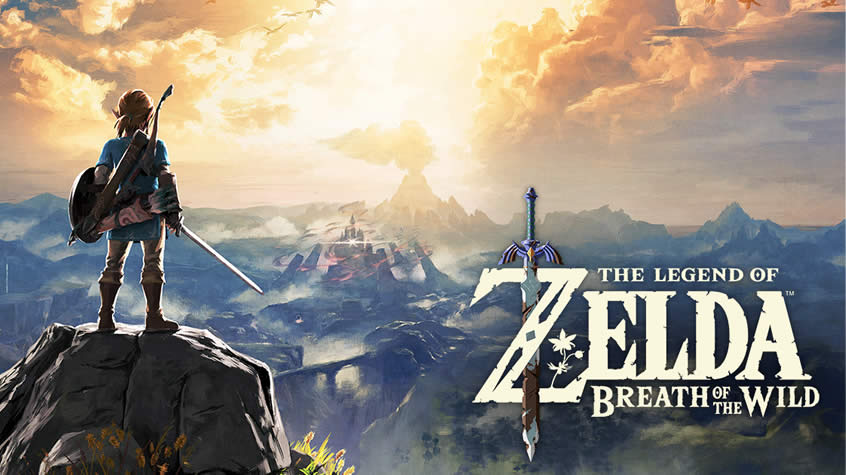
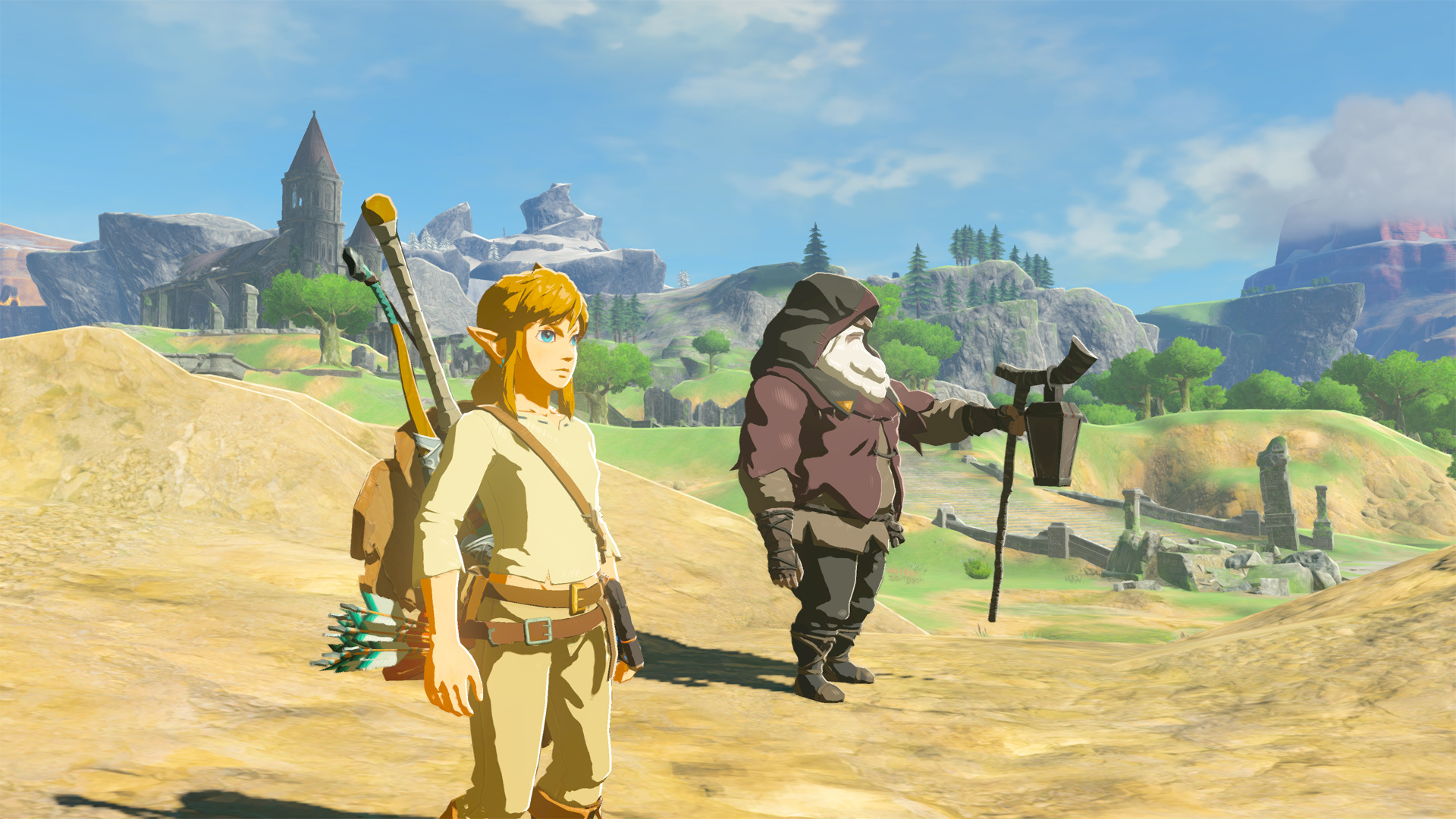
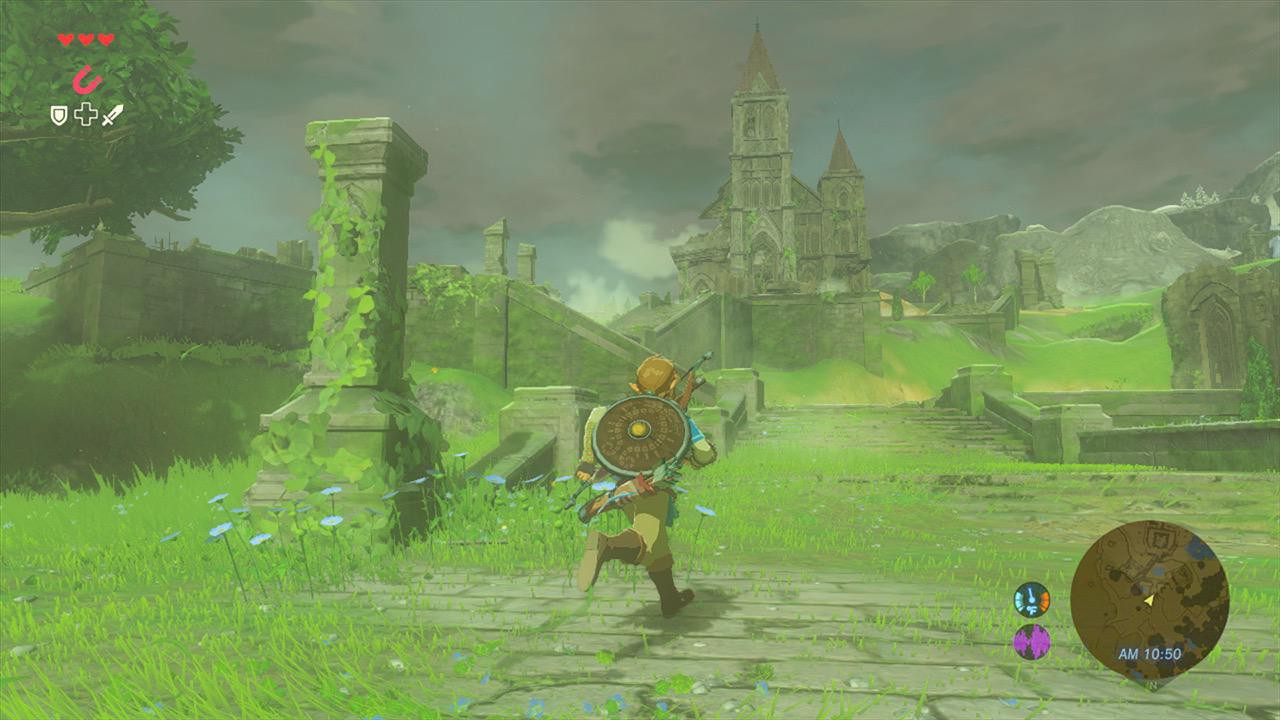
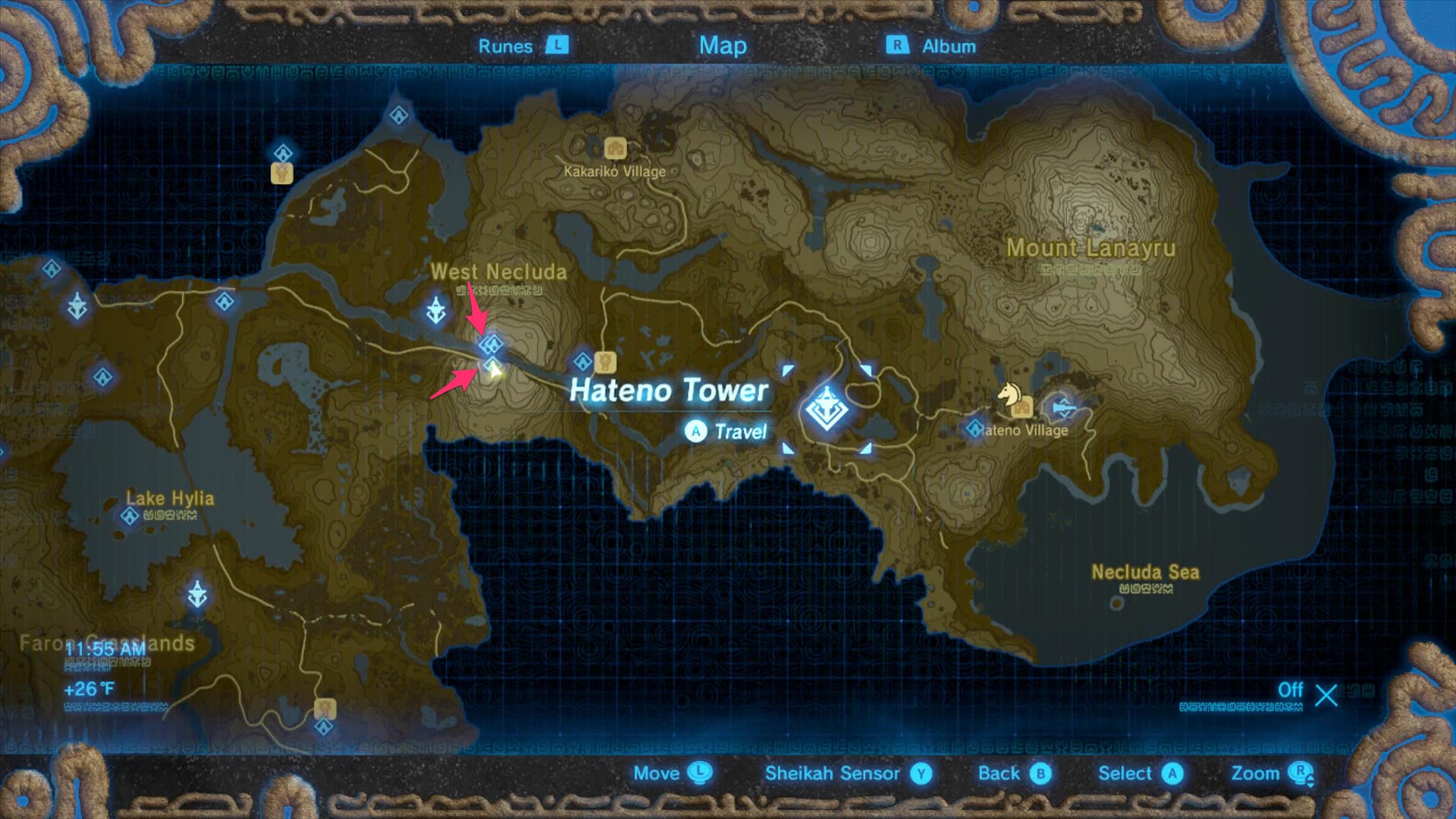
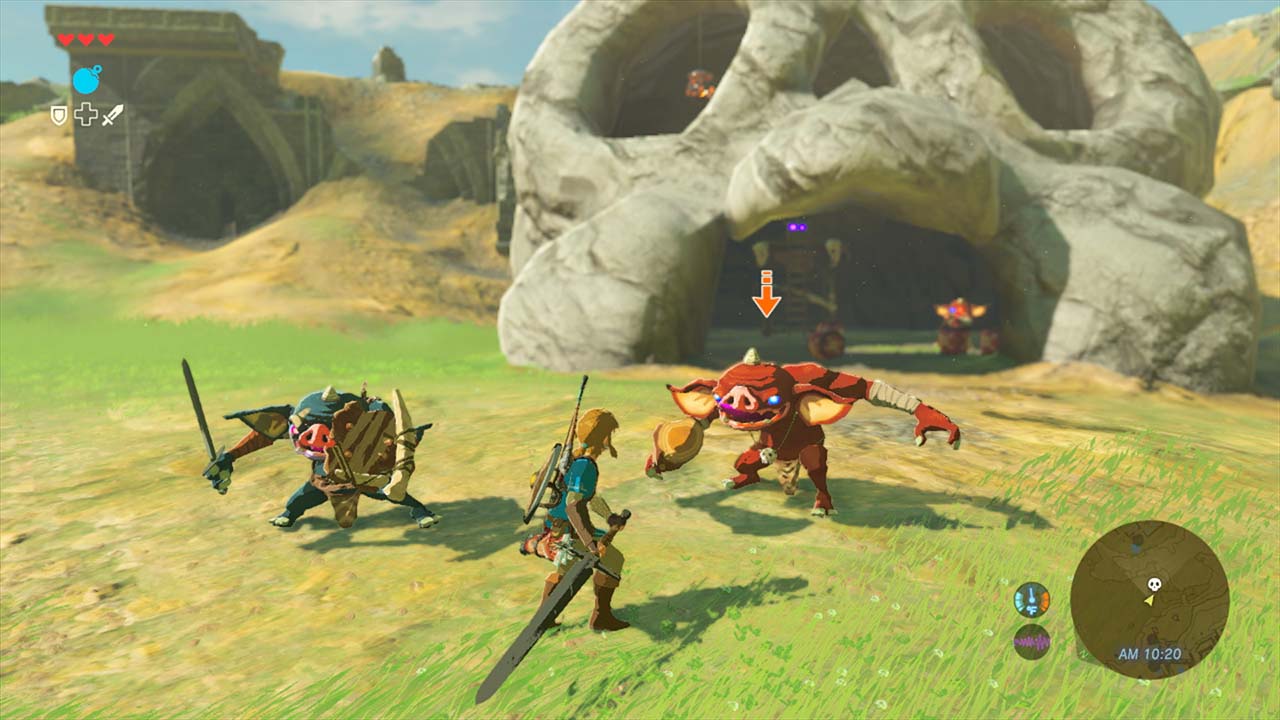
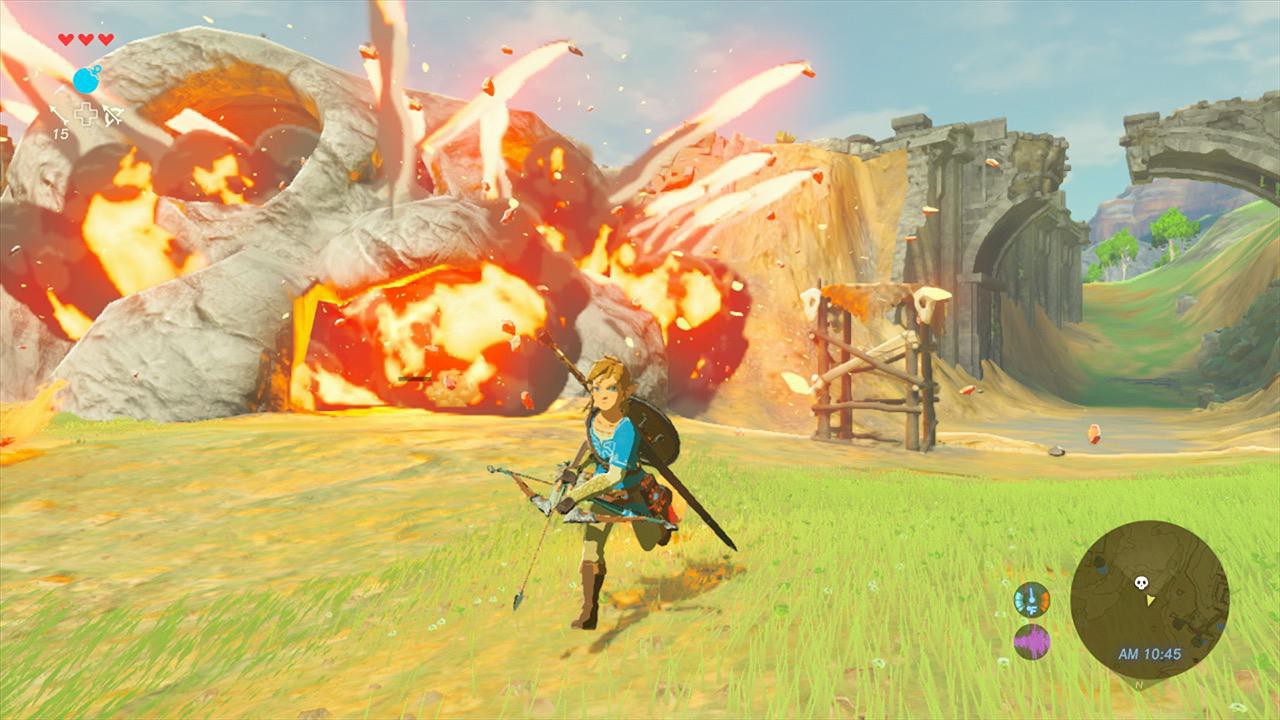
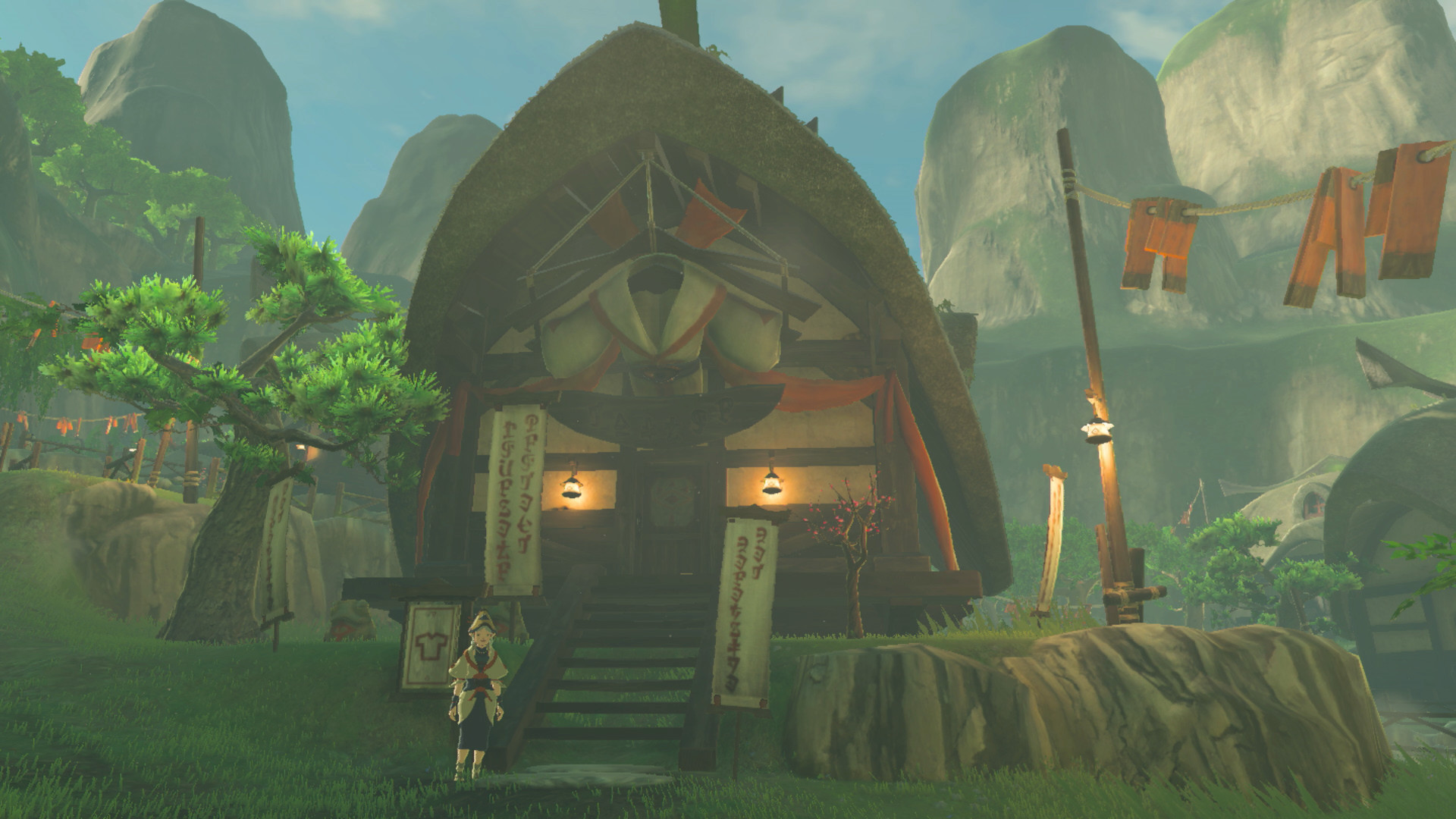
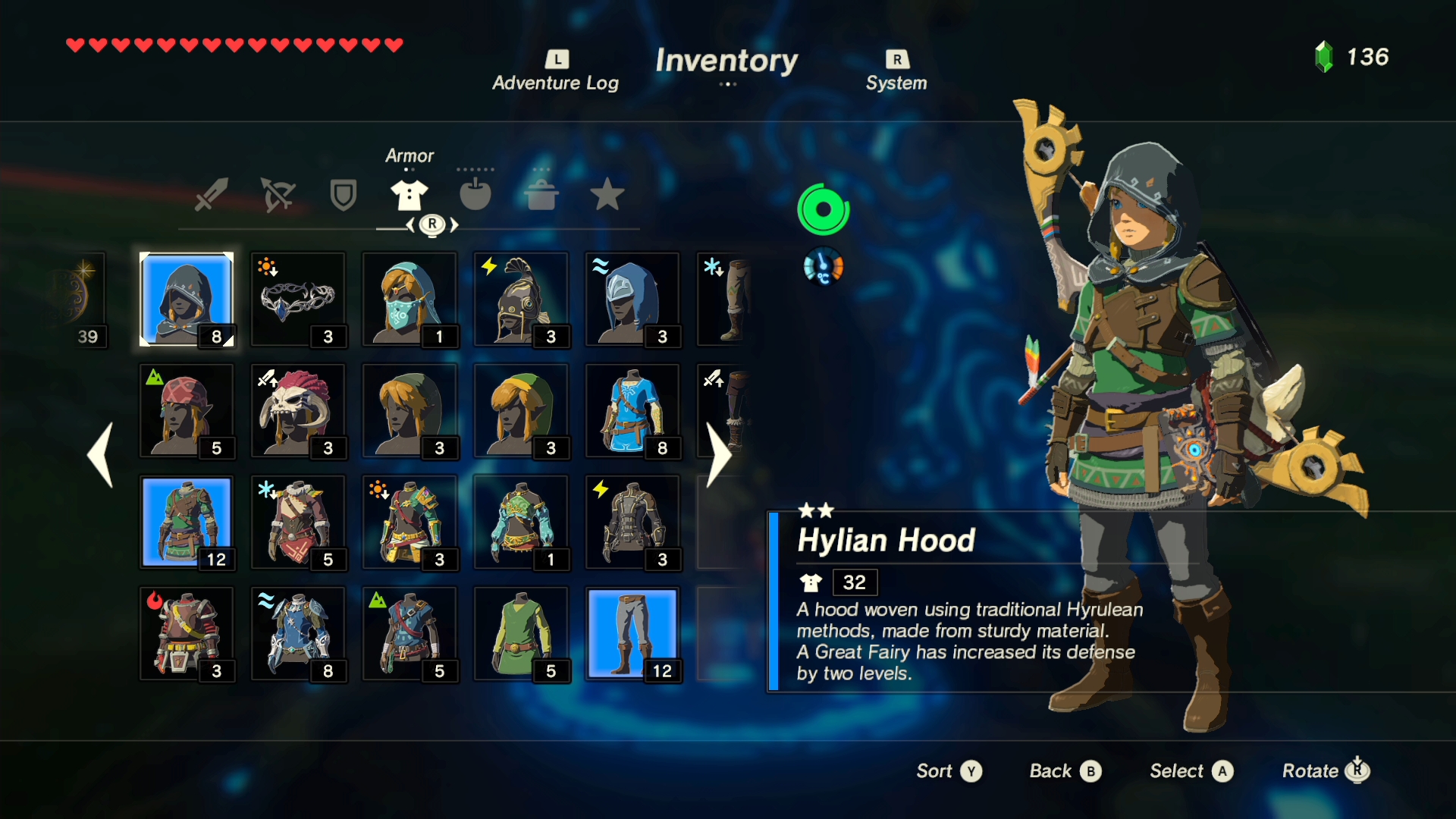
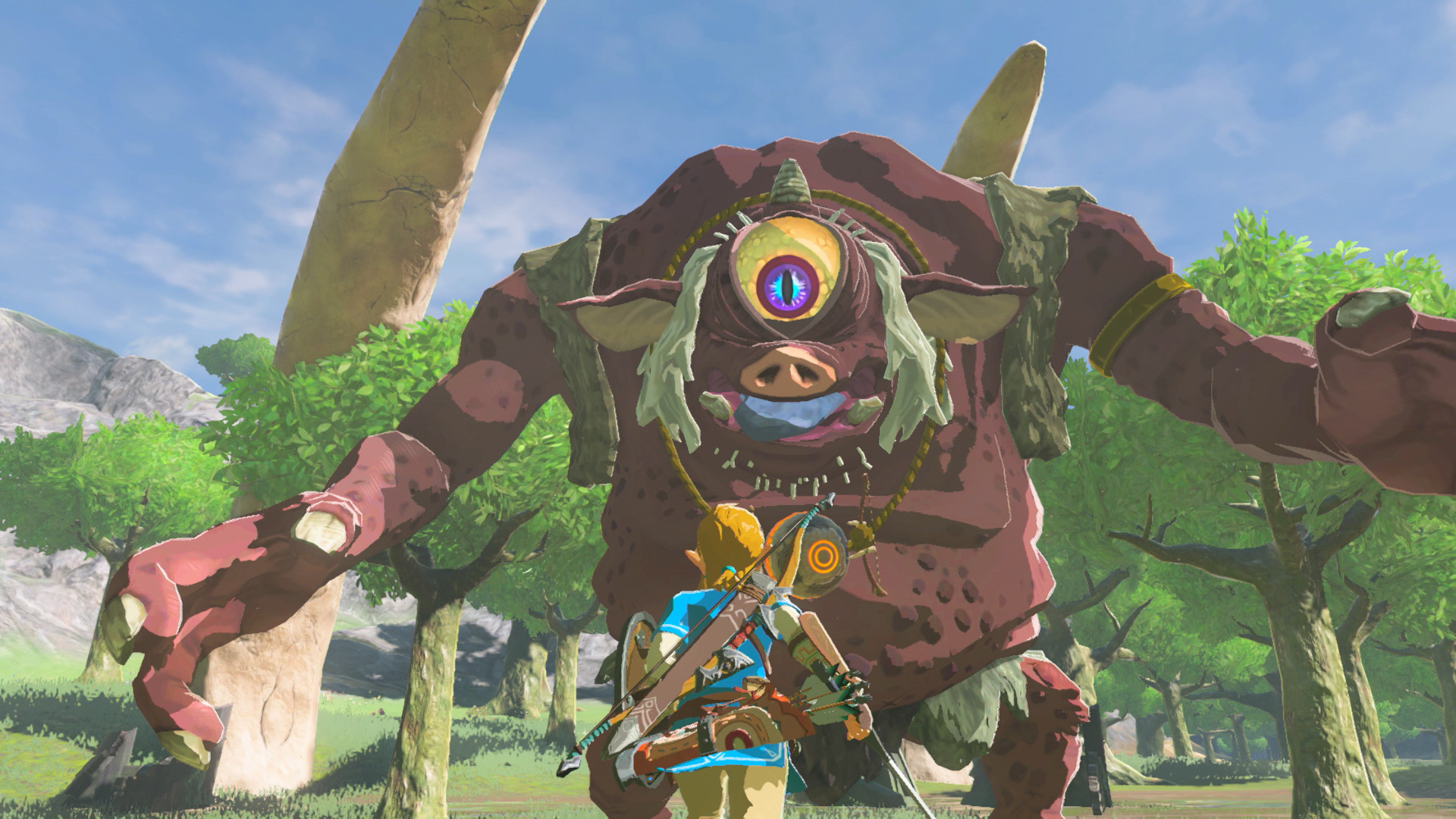




[…] the last time that people bought a killer title at launch other than Super Mario 64. This is a stellar title and a strong contender for Game of the Year considering how much freedom and creativity is given to […]